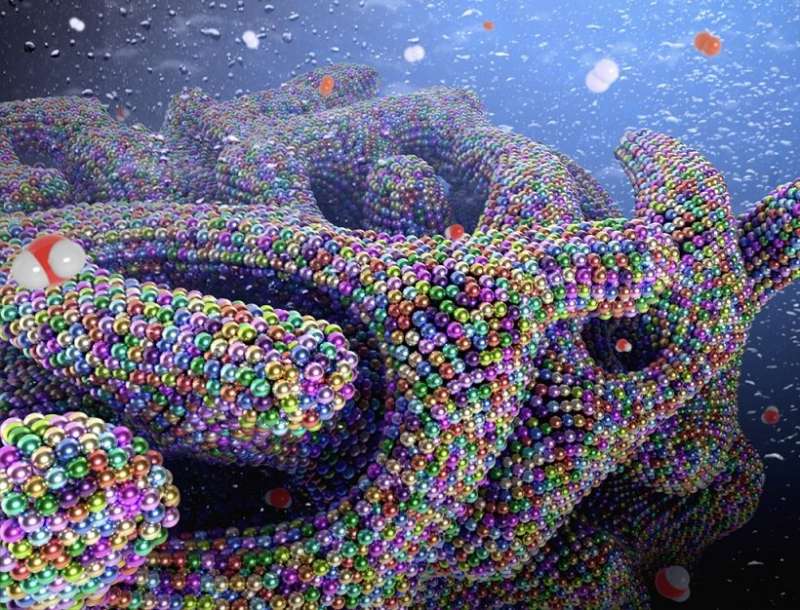Researchers develop nanoporous super-multi-element catalyst

A joint research group led by Research Associate Cai ZeXing and Professor Takeshi Fujita at School of Environmental Science and Engineering, Kochi University of Technology, and Professor Masahiro Miyauchi at School of Materials Science and Engineering, Tokyo Institute of Technology has developed a "nanoporous super multi-element catalyst" by a method called de-alloying via the selective corrosion and elusion of a specified element from the alloy. The fabrication method is simple: an aluminum alloy containing 14 elements is prepared, and the nanoporous super multi-element catalyst is manufactured by preferential dissolution of aluminum using an alkaline solution. It has been found that, by using this method, while creating a nanoporous structure with a large specific surface area (surface area per unit mass of material) with a pore size of about 5 nanometers, elements other than aluminum that do not dissolve in the alkaline solution are accumulated to be aggregated in the form of a solid solution alloy in which the 14 elements are uniformly distributed at the atomic level.
Further, the nanoporous super multi-element catalyst was found to show excellent properties as an electrode material for water electrolysis due to the multi-element superposition effect (cocktail effect). As this catalyst contains many different elements, it is expected to be developed into an omnipotent and versatile catalyst in the future.
This research is conducted under the JST's Strategic Basic Research Programs CREST (Team type), Research Area: "Innovative catalysts and creation technologies for the utilization of diverse natural carbon resources."

More information: Ze-Xing Cai et al, Nanoporous ultra-high-entropy alloys containing fourteen elements for water splitting electrocatalysis, Chemical Science (2021). DOI: 10.1039/d1sc01981c
Journal information: Chemical Science
Provided by Japan Science and Technology Agency





















